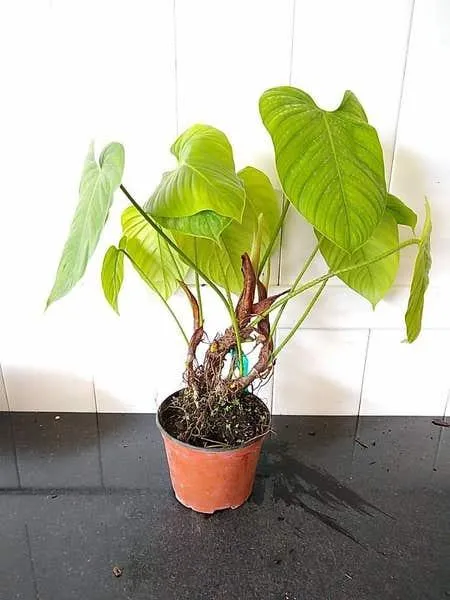Your Complete Guide to Fuzzy Leaf Houseplants
If you’re searching for “fuzzy leaf house plant”, you’ve come to the right place. Fuzzy leaves give houseplants an interesting texture that can liven up any indoor space. In this article, I’ll cover all the basics of caring for these unique plants as well as recommend some top choices to consider. By the end, you’ll have all the knowledge you need to select and look after a fuzzy leaf beauty of your own.
Understanding Fuzzy Leaf Texture
Many plants develop fuzzy or hairy leaves as a defense mechanism in their natural habitats. The fine hairs that give leaves their fuzzy appearance can deter insect pests and protect the plant from other threats like extreme temperatures or sunlight. Inside as a houseplant, the fuzzy texture is merely ornamental and does little beyond adding visual interest. While low-maintenance overall, fuzzy leaf plants do have some special care requirements compared to smooth-leaf varieties.
Light and Water Needs
Most fuzzy leaf plants flourish in medium to bright, indirect sunlight. Direct sun may cause leaf burn on more delicate varieties. To avoid this, position plants just outside a south-facing window or in an east or west window. In very low-light homes, consider agrow light.
The hairy leaves affect a plant’s water intake and retention. Fuzz absorbs moisture well but also shields the leaf, so water when the top inch of soil is dry instead of on a schedule. Water thoroughly until it drains from the bottom and then allow the soil to dry out partially before watering again.

Temperature Tolerance
Fuzzy leaf plants generally adapt well to average indoor temperatures between 65-80°F. Take extra care if placing a tropical variety in a cooler home. Consider a heated propagating mat or terrarium to boost humidity and temperatures as needed.
Cleaning and Pests
The fuzzy coating prevents water from effectively wetting and washing away dirt and dust. Use a soft brush or dry cloth to gently wipe leaves as needed. Avoid harsh soaps or chemicals which can damage leaf hairs. Common pests like spider mites may find the fuzzy coating appealing for laying eggs. Regularly check for signs and treat promptly with insecticidal soap if spotted.
Recommendations
Here are some top fuzzy leaf plants to consider for your home:
- Peperomia – With over 1,000 species, peperomias come in an array of fuzzy leaf textures and colors. Low-light tolerant.
- Polka Dot Plant – Striking white and green variegated leaves. Tolerates moderate light and humidity.
- Coleus – Vivid foliage colors and patterns on this heat-loving perennial. Shear back spent flower spikes.
- Chinese Evergreen – Evergreen shrub with fuzzy burgundy, green or variegated leaves. Thrives in medium light.
- Rubber Plant – Iconic plant with thick, shiny dark leaves. Tall growth habit well-suited for large spaces.
Caring for Fuzzy Favorites
Here are some tips based on my experience caring for specific fuzzy plants:

Peperomia
Peperomias are very low maintenance. I water mine about once every 10-14 days and they thrive in an east-facing window. Occasionally misting the leaves boosts humidity, which pep up!
Polka Dot Plant
These guys like humidity too. I keep a pebble tray filled with water under mine to boost moisture levels. Be sure the soil fully dries between weekly waterings to prevent root rot with their fuzzy roots.
Coleus
In summer, I put my coleus outside where it really takes off with the extra sunlight and warmth. Inside, keep it within 6 feet of a south or west window. It may scorch at closer ranges.
With the right conditions, fuzzy leaves can add loads of visual appeal and texture to your home. I hope this guide has covered all the essentials for choosing a fuzzer and providing it with a happy, healthy environment indoors. Feel free to ask if you have any other questions!

Now it’s time to hit the garden centers and find your perfect fuzzy friend. Have fun browsing all the unique selections. You’re sure to fall in love with the charming leaves. Good luck, and happy planting!
Key Traits to Consider When Choosing a Fuzzy Leaf Houseplant
| Plant | Leaf Texture | Water Needs | Light Preference | Ideal Temperature |
|---|---|---|---|---|
| Peperomia | Velvety, fuzzy leaves | Allow soil to dry between waterings | Bright, indirect light | 65-80°F |
| Polka Dot Plant | Velvety, fuzzy leaves with white spots | Water when topsoil is dry | Bright, indirect light | 65-80°F |
| Zebra Plant | Velvety fuzzy leaves with dark green and light green stripes | Water when top 1-2 inches of soil are dry | Bright, indirect light | 65-80°F |
| Airplane Plant | Velvety fuzzy oval leaves | Allow topsoil to dry between waterings | Bright, indirect light | 60-75°F |
| Fittonia | Velvety reddish fuzzy leaves | Keep soil evenly moist | Bright, indirect light | 65-75°F |
FAQ
-
What kinds of fuzzy leaf house plants are popular?
Basically, the most common fuzzy leaf house plants are Peperomia and Coleus. Peperomia has thick, succulent leaves that come in amazing shades of green, red, and purple. Coleus is known for its brightly colored leaves and differs based on variety.
-
How often should I water my fuzzy leaf plant?
It depends on the plant type and growing conditions. Check the soil before watering – if the top inch is dry, it’s needing a drink. Generally, peperomias and coleus like to have evenly moist soil but not soaked. As the old saying goes, “underwatering is better than overwatering.” Too much moisture can cause root rot.
-
What kind of sunlight do fuzzy leaf plants prefer?
Most fuzzy leaf varieties like medium to bright indirect sunlight. Putting them in too much direct sun may cause the leaves to scorch or fade in color over time. However, some types will tolerate low light quite well. Experiment to find the perfect spot for your plant’s needs.

-
How often should I fertilize?
During the growing season when plants are actively putting out new growth, you can fertilize every few months using a diluted liquid houseplant food. Be careful not to overfeed, which can damage the roots. It’s better to go easy on the fertilizer and avoid burning the fuzzy leaves.
-
Is my fuzzy leaf plant getting enough humidity?
If the leaves start to brown around the edges, it could be a sign it needs more humidity. Try misting the foliage daily with a spray bottle of water. You can also group plants together or put them on a pebble tray with water. Otherwise, most varieties adapt well to average indoor humidity levels.
-
How do I propagate my fuzzy leaf plant?
Propagation is quite simple – just remove a healthy leaf cutting and place the stem end in moist soil. Within a few weeks you should see roots developing. Once established, transplant your new plant to a small pot. Now you have two fuzzy friends where there was one before!
